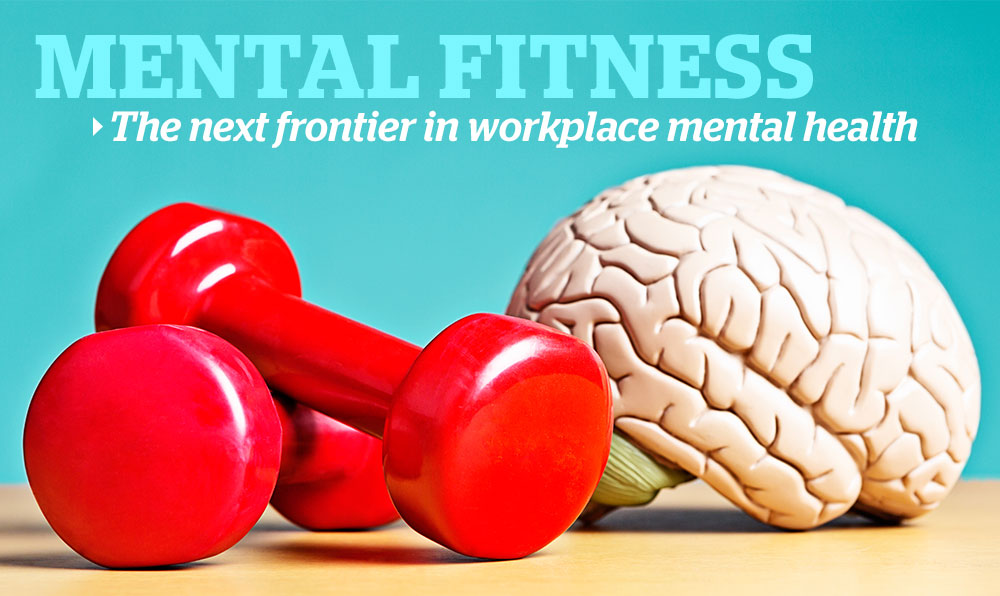

Columns/Blogs
Features
Mental Health
Mental fitness: Have you heard of applied in-vivo meditation?
By Bill Howatt

EDITOR’S NOTE: ‘Mental Fitness: The next frontier in workplace mental health’ is a weekly series, in partnership with Dr. Bill Howatt of Howatt HR Consulting in Ottawa. This series takes a deeper look at mental fitness — an approach to prevent mental harm and promote mental health.
As a beginner and someone interested in learning more about how to calm the mind, I found a Masterclass offered by Jon Kabat-Zinn on meditation a wonderful short course.
I appreciate how practical he made the application of meditation and its tangible benefits for promoting health. One concept he shared I thought was so practical that it inspired me to create this microskill.
Most of us think about meditation as something we do on a mat or lying down, but there are many ways a person can practice meditation. They all have much the same in common; they are done in a quiet space and are designed to train the brain to calm down.
Psychologically Safe Workplace Awards provide employers tools, data on mental health
Kabat-Zinn made the point that we can meditate as much as we want. But if we cannot leverage the key learnings from meditation, we’re missing an important opportunity.
It was empowering and encouraging to learn that we can learn to not react to our negative thoughts and unpleasant feelings.
While most of us may never master meditation, we can benefit from its practice, and it does not need to be perfect.
One way to reinforce this microskill is through daily practice, even if for only a few minutes a day. This can help train our brain to be in the moment and to focus on the now.
The more we practice meditation, the more we realize its benefit such as training the brain to find calm, quiet the mind, and discover how we can observe life stressors and unpleasant emotions instead of reacting to them.
In a focused, calm mind, we can notice, observe, and then dismiss unwanted, negative thoughts.
Introduction to applied in-vivo meditation
The following introduction to in-vivo meditation is based on my personal experience and adaptation of what I learned in Kabat-Zinn’s course. Any credit must go to him.
We all know there is zero chance we will live our lives without stress. In fact, we would not want to aspire to this outcome as we need stress to live.
Stress is not the problem; how we react to it is. When we feel overwhelmed and engage in maladaptive coping skills such as drinking alcohol to numb stress, we can put our long-term health at risk if this becomes a habit.
How we react to stress is what really matters. When we feel unwanted stress is becoming overwhelming, this can trigger a chain of events such as increased negative thoughts and unpleasant emotions that drive our physiology and behaviour.
This microskill provides a framework for noticing unpleasant emotions and negative thinking in real-time. Practicing the following steps can help you feel you are in control rather than being pulled along and reacting.
Accept the possibility you have a choice: For this microskill to work, you must accept the possibility that you have choices when faced with a life stressor, regardless of how intense it is. Accept that you can learn to become an observer of stress instead of a reactor. As an observer, you do not feel a need to run away from an unpleasant feeling or thoughts that jump into your head, trying to get your attention. This prepares you to notice.
Notice: Life happens fast and seldom do you get advance notice of unwanted stress. Your body often knows before your brain. For example, you get some bad news and before you know what is going on your body’s fight or flight reaction has turned on, followed by your conscious brain trying to catch up to understand what has just happened. Simply committing to notice your emotions and not feel you need to react creates space to ground yourself.
Ground yourself: Create more space so you can get your mind and body aligned. Though your mind and body are connected, they do not communicate well with each other under stress. You cannot simply say, “Calm down” and your body will understand what to do. However, as Kabat-Zinn teaches, you always can “Stop, remember, and drop in.” What he is referring to is what is at the core of all meditation: breath. It is the only constant you can count on at any moment. When you stop thinking about what you are about and remember to focus on your breath, this prepares you to observe.
Observe and decide: You will not be able to stop all your negative thoughts and emotions, but you can learn not to give them so much power in the moment. You can accept, observe, and decide where you want to put your focus. When you put yourself in position to observe negative thoughts and unpleasant feelings instead of sitting in them, you are less likely to feel an urge to react. This allows you to consider options to focus your energy to better cope with the situation.
 Dr. Bill Howatt is the Ottawa-based president of Howatt HR Consulting and the former Chief of Research and Workforce Productivity at The Conference Board of Canada.
Dr. Bill Howatt is the Ottawa-based president of Howatt HR Consulting and the former Chief of Research and Workforce Productivity at The Conference Board of Canada.
If there is a particular microskill or topic you would like to see Dr. Howatt write on that supports employees’ mental health in the workplace, please send your request to Talent Canada editor Marcel Vander Wier.
Print this page